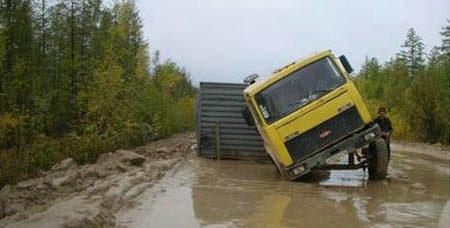Join ITS America and AAAE at the Intersection of Intelligent Transportation Systems and Aviation!
Airport land side management has increasingly become a focus for airport managers and transportation management center mangers alike. More and more, airport managers are turning to Intelligent Transport Systems (ITS) to provide solutions to the challenges they face, such as managing parking, commercial vehicle movement, incident management, security and much more. This conference is co-sponsored by the American Association of Airport Executives (AAAE) and the Intelligent Transportation Society of America (ITS America) and will showcase the top industry leaders in the Intelligent Transport System (ITS) industry who are currently providing solutions for airport landside management. The conference will also feature airport personnel sharing real-world results, lessons learned, success stories bad reasons why they have chosen ITS products and services as their airport land side management solution.
Details of Sessions:
Tuesday, August 4, 2009
Keynote Address: Michael Huerta, President, MPH Consulting “Transportation Challenges Presented by the 2002 Winter Olympics in Salt Lake City, UT” – confirmed
Session 1:
“ITS Options in Airport Ground Traffic Management and Revenue Generation”
Moderator: Gary Duncan, Chief Technology Officer for Econolite (EGI) – confirmed
Panelists:
1. Dave Kinnecom, Utah DOT – confirmed
2. FAA –confirmed participation, speaker TBD
3. Stan Doepke, Eagle Integrated – confirmed
This session will focus on the challenges that airport landside managers face in effectively managing and tracking traffic flow in and out of the airport environment. Discussion topics will include freeway and arterial signage, real time travel information, and other traffic management tools. In addition to managing the traffic flow, airport managers have significant fiscal responsibility and this session will address those responsibilities and provide real examples of using dwell times, trip charges and airport usage fees from taxis and shuttles to provide a revenue stream for airport operations.
Session 2:
“ITS Options in Airport Ground Incident Management”
Moderator: Irv Rosenblum, Telegra – confirmed
Panelists:
1. Dan Lukasik, Delcan – confirmed
2.Dave Korzep, Salt Lake City Department of Airports –confirmed
3. Ron Sherwood, Hartsfield-Jackson Atlanta International Airport – confirmed
This session will focus on the use of technologies to help airports managers address security issues related to curbside management of transportation taxis, limousines and buses. Additionally, panelists will address management of vehicle accidents on airport property, management of pedestrian flow, park and wait lots, and other security challenges.
Session 3:
“ITS Solutions to Airport Parking Conundrums”
Moderator: Mike Drow, Standard Parking – confirmed
Panelists:
1. Rick Warner, President of ParkingCarma – confirmed
2. Michael Howarth, Intelligent Devices – confirmed
3. Neal Heaton, BWI – confirmed
4. Jon Tarleton, Quixote – confirmed
Passenger parking is the largest source of revenue for most airports and proper management is of increasing importance. The session will focus on ITS products and services and how they relate to “Parking Guidance Systems,” “Parking Reservation Systems,” and “Vehicle Locator Systems.” Intelligent Transportation System technologies are now being used in some locations to take the guess work out of finding open parking lots and spaces, pick up points and drop off points for specific airlines. Discover some of the leading edge technology implementations that are working at airports today.
Session 4:
“Importance of ITS Standards in ITS Implementation at Airports”
Moderator: Casey Crabtree, Daktronics – confirmed
Panelists:
1. Rod MacKenzie, ITS America – confirmed
2. Bob Rausch, TransCore –confirmed
3. Marshall Elizer, Gresham Smith & Partners – confirmed
4. Tom Wunk, Sheidt & Bachmann – confirmed
ITS standards define an architecture of interrelated systems that work together to deliver advanced transportation technology and services across different agencies, modes and users. Most standards arevoluntary, consensus-based, and open, meaning that their use is not mandated by law, they are consensus-based (meaning that a published standard has attained general agreement through cooperation and compromise in a process that is inclusive of all interested parties), and they are not proprietary and are available for anyone to use. The use of standards for airport ITS encourages growth of these services by minimizing development costs, increasing compatibility and interoperability, and increasing buyer and seller confidence in products. A standards-based approach to airport ITS integration helps to facilitate the exchange of transportation data as well as more easily accommodate future equipment replacements, systems upgrades, and system expansions. This session will explore standards available to ITS applications in the airport environment and how they are being used in airport ITS systems development today.
Wednesday, August 5, 2009
Session 5:
“Airport Management Roundtable”
Moderator: Mark Ozenick, Thomas Group – confirmed
Panelists:
1. Ron Sherwood, Atlanta – confirmed
2. Dave Korzep, SLC – confirmed
3. William Flowers, DFW – confirmed
4. Neal Heaton, BWI – confirmed
This exciting round table discussion will feature key airport executives discussing topics from the previous day as well as other important issues facing them and their thoughts about how technology has or might help them address these issues. Real world examples from those who have been there!
Technical Tour of Utah Department of Transportation Traffic Management Center “ITS Implementation”
Registration
Registration Rates
(Includes one welcome reception, two continental breakfasts, one lunch, coffee and refreshment breaks, and all handouts.)
Hotel
Rooms are being held at the
Salt Lake City Marriott City Center, 220 South State Street, Salt Lake City, UT 84111, phone (801) 961-8700.
All attendees will receive a special rate of $179 single/double. Reservations must be made by Monday, July 13, 2009 in order to guarantee this rate. Reservations made after this date can only be honored on a space and rate available basis. To make your hotel reservations, call the hotel directly at 801-961-8700 or toll free at 866-961-8700 and identify yourself as part of the “Intelligent Transportation Society of America” group. All reservations must be canceled by 6 p.m. on the day of arrival to avoid a cancellation fee of one night room and tax charged to the credit card.
Transportation
Airline reservations—American Airlines has been selected as the official air carrier for this meeting. Attendees can receive 10% off American’s full coach fares or 5% off all other published fares. Rules and restrictions apply. To take advantage of American’s special fares, call American Airlines directly at 800-433-1790 from 6 a.m.-1 a.m. eastern time daily and refer to star file #A5989AB.
Ground Transportation
The Salt Lake City Marriott City Center is about 7 miles from Salt Lake City International Airport (SLC). A taxi fare from SLC to the hotel is estimated at $25 each way. Express Shuttle, (800) 397-0773, provides individual and group transportation service from SLC to the hotel for $8 each way.
Avis Rent-A-Car System, Inc. is the official rental car company for this meeting. To make reservations or for further information, call 800-331-1600 and
reference J097316.
Contacts
Please contact Lori Vintilescu, ITS America, at
loriv@itsa.org or 202-484-4847 for more information on registration, sponsorship or exhibitor information. If you are interested in participating as a speaker or committee member contact Jennifer Klass, A.A.E., AAAE at
jennifer.klass@aaae.org or 703-824-0500 ext. 225.












